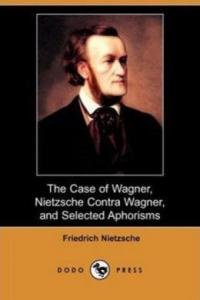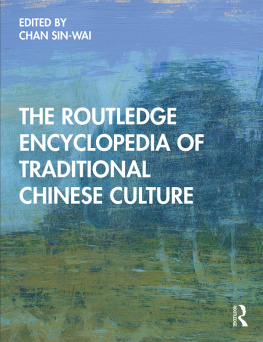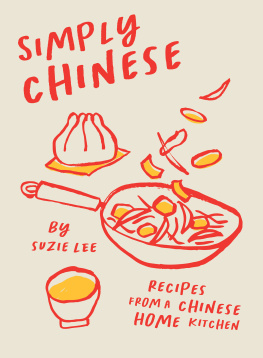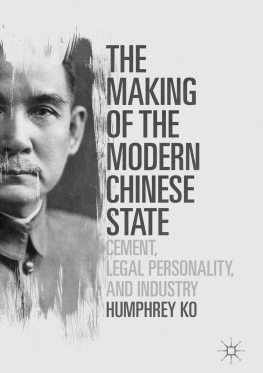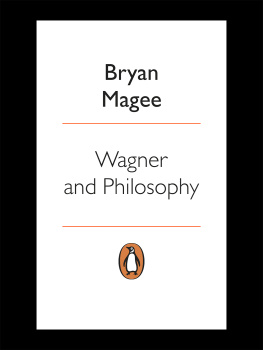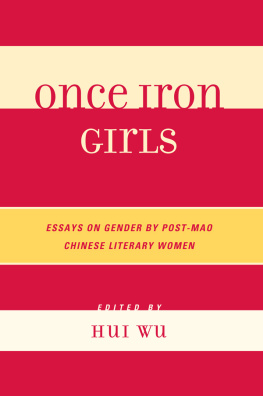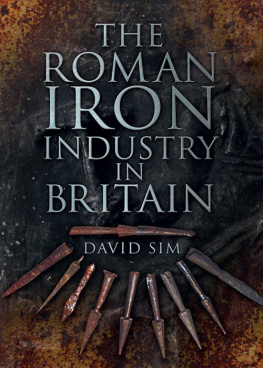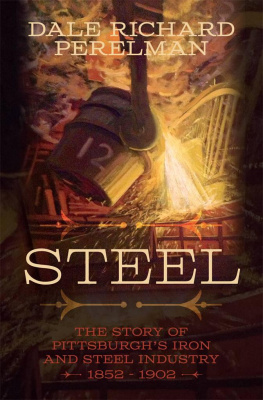Nordic Institute of Asian Studies
NIAS Report series, No. 32
First published in 1997
by Curzon Press
St. Johns Studios, Church Road, Richmond
Surrey TW9 2QA
Donald B.Wagner 1997
British Library Catalogue in Publication Data
A CIP catalogue record for this book is available from the British Library
Library of Congress in Publication Data
A catalog record for this book has been requested
ISBN 0700709517
It is a great pleasure to have been asked to write this foreword to Don Wagners latest piece of research. Ferrous metals are at the heart of economic development, ancient and modern. These constitute the basic input for a wide range of consumer durables, for machinery, and for infrastructure construction. Dons research over many years has shed great light upon this key sector. His monumental work, Iron and Steel in Ancient China,1 has quickly become the standard source on the topic. His monograph on Dabieshan is a pioneering piece of modern economic history, unusual in its linking of pre- and post-1949 analysis in a single piece of work.2
Throughout his research he has insisted that it is necessary to understand the technical basis of the production of ferrous metals in order to analyse the economic history of this subject. It is our good fortune that, like his mentor Joseph Needham, Don combines great scholarship and scientific rigour with exceptional clarity of presentation, so that those like myself, who were not trained as scientists, can nevertheless follow the argument. Don has also insisted on the importance of situating technical change in the wider socio-economic context.
This monograph carefully examines Chinas modern iron industry in a regional setting. Through an examination of its iron industry, Dons book brings wonderfully alive the regional differences in Chinas modern economy. In the Introduction he hints at a possible future work in which he may analyse in detail the story of the iron industry in one of the four regions examined in this book, including an analysis of the role of governments at different levels and the role of entrepreneurs. This is greatly to be looked forward to.

The history of Chinas ferrous metals sector parallels the history of the whole Chinese economy. Iron was a relatively late introduction to China, with a true Iron Age beginning around the sixth century BC , long after the Iron Age of the West; but the Chinese developed the ability to cast iron almost as soon as they knew about it at all. Moreover, steel production did not lag behind that of iron. By the sixth century AD China was producing steel by an ancestor of the Siemens-Martin open hearth process. The wide application of iron and steel (as opposed to its use by a small elite) came much earlier in China than in Europe.
There is still great uncertainty about the long-run trend in Chinas output of ferrous metals from the tenth or eleventh century AD . It is uncertain at what point Europe took over from China as the worlds leading region in their production. In Dons judgement China had the worlds largest and most efficient iron industry until around 1700, but after that point an extraordinary sequence of technical improvements brought down the price of iron dramatically and was a leading factor in the British Industrial Revolution. The central theme of this book is the way in which the iron industry in different parts of China was affected by this severe challenge from the outside world after the late eighteenth century.
By the 1930s Chinas steel output was only a small fraction of that of the worlds leading steel producers. In 1936 China produced just 04 million tonnes, compared to over four million tonnes in Russia, over seven million tonnes in France and 27 million tonnes in Germany. It was at about the same level as a small European economy such as Austria. After 1949, China began its long process of catch-up in ferrous metals, both technically and in terms of total output. By the late 1970s, China ranked fifth in the world in terms of total output.
Under accelerated modernisation from the 1980s, Chinas rapid growth in industrial output was matched by a comparable growth in iron and steel output. While output in the advanced capitalist economies stagnated, and collapsed in the former USSR, output in China grew apace to meet the booming demand for iron- and steel-using products, from motor vehicles, refrigerators and electric fans, to bridges, ships, and apartment blocks. Chinas steel output rose from 36 million tonnes in 1980 to 90 million tonnes in 1993.3
Alongside the expansion of output went rapid technological upgrading. Huge, completely modern plants were built, such as Baogang in Shanghai and many large older plants, such as Shougang in Beijing, comprehensively modernised in the reform period. An important part of the modernisation of such plants was learning by doing through the purchase, dismantling and reassembling of modern, second-hand equipment from the stagnating steel industries of Europe and the USA.4 As this monograph demonstrates for an earlier period, the story of Chinas recent growth in iron and steel is one in which growth, modernisation and technical progress interact with real historical processes. An analysis of government action at different levels, of regional peculiarities and of the role of industrial entrepreneurs who run Chinas iron and steel plants, continues to be necessary in order to understand the way in which Chinas ferrous metals industry is evolving.5
By the early 1990s China had surpassed the USA to become the worlds second largest producer and was poised to overtake Japan as the leading producer. However, Chinas per-capita steel output was still only a tiny fraction of that of the advanced economies, standing at around 60 kilograms, compared to over 400 kilograms in the USA, 800 kilograms in Japan and over 1,200 kilograms in Singapore.6 It is likely that Chinas economy will continue to grow at a fast rate, and that demand for steel will also grow rapidly. At some point in the early- to mid-twenty-first century it is probable that Chinas steel output will surpass 150 million tonnes, and may well be much above 200 million tonnes.7 China will then have truly recaptured the central position in the worlds ferrous metals industry that it occupied for such a long period of medieval history.
In Chinas recent accelerated growth of iron and steel output, local plants of the kind that form the focus of analysis in this monograph continue to make an important contribution to Chinas ferrous metals output. In 1992 there were over 1700 steel plants in China. Although large keypoint plants dominated, with almost 70 per cent of total output, smaller plants were sharply increasing their contribution. Over 1,600 local plants accounted for around one-third of total output in the early 1990s.8 The 140-odd keypoint plants averaged around 12,000 workers each and on average produced an annual output of around 375,000 tonnes of steel. Over 1,600 local plants averaged only around 1,000 workers each, and averaged only around 14,000 tonnes each per annum. Some of the local plants were modern mini-mills using sophisticated modern techniques, typically with electric furnaces, and using scrap steel. However, many of them were integrated plants based on older, local, and typically more labour-intensive, techniques of the kind analysed in this monograph. They used local iron ore mined in handicraft mines, often with rough and dangerous conditions of labour. They typically converted local pig iron into steel. Technical and socio-economic analysis of the recent history of this huge sector, comparable to Don Wagners for an earlier period, hardly exists.




